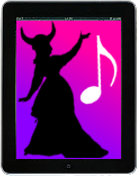I’ve been working on some song & aria translations lately and have needed to check the pronunciation for various words. I own a modest collection of printed dictionaries with IPA at home, but was curious about whether this information is available online. Here’s a roundup of online dictionaries I found that use IPA:
Italian
French
German
Russian
Czech
English
- Wiktionary English – includes American English and British Received Pronunciation (RP)
Note, of course, that the dictionaries above don’t take into account all of the rules of lyric diction (e.g. avoiding uvular R), but they do come in handy when checking things like open vs. closed vowels. Also, with noted exceptions, the dictionaries listed have audio pronunciation examples for selected words.
Another FYI: WordReference.com has iOS/Android apps, but the IPA (for selected languages) is only on the full website, not the apps. I’d like to do a survey of online/offline dictionary apps with IPA in a future blog post – if you’re aware of any, please let me know.
Related Posts:






